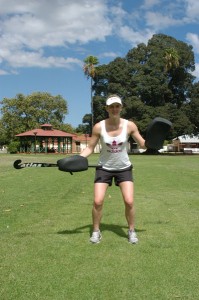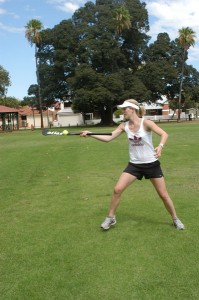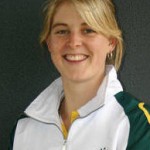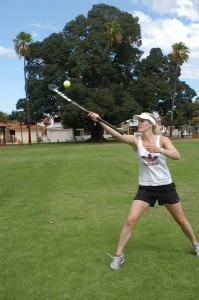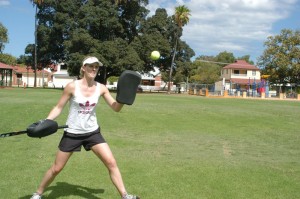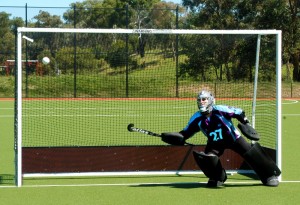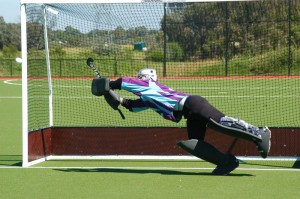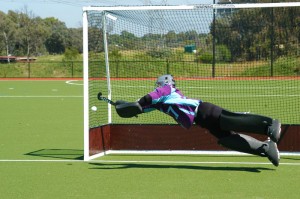Please note that I am not a qualified expert in this area and all that I have written is on my own previous experiences. Many people play all year round both indoor and outdoor, but for some that don't play all year round there is a time out period generally called the off season.

Please note that I am not a qualified expert in this area and all that I have written is on my own previous experiences. Many people play all year round both indoor and outdoor, but for some that don't play all year round there is a time out period generally called the off season.
Training during the off season doesn't have to include putting your gear on. For me I find it better not to put my gear on, assuring that I will be fresh for the coming season.
The tendency to stop training during this time is sometimes overwhelming but the goalkeeper who is committed to bettering their game will continue to train during this valuable time.
The value of the off season can never be underestimated. Getting stronger, fitter and faster is something that is best done in this period. As we all know, a goalkeeper needs to have a high level of concentration throughout the whole game. This can be helped tremendously over the off season.
The Whole Approach:
What do we work on?
- Strength
- Aerobic fitness
- Speed
- Agility
- Variety
Strength Training
This should be done in consultation with a fitness trainer or strength and conditioning coach. Some exercises that are good for improving general strength are:
- Squats
- Bench press
- Lateral pull down
- Sit ups
- Biceps curls
- Leg press
- Leg curls
- Leg extension
A basic guideline is that you should do 3 sets of each exercise with 8-12 repetitions in each set. Please remember that it is also good to have a break between each set generally 2 times as long as it takes to do the exercise.
Aerobic Fitness
Aerobic fitness is something that not all people enjoy doing. Aerobic fitness can be done in many forms, from running to roller-blading. For goalkeepers it is important that you do have a level of fitness so that your concentration level is up to a satisfactory level that can help you sustain your focus for the whole 70 minutes.
Aerobic fitness doesn't need to be long and tedious, frequent sessions for a 20-30 minute duration should be sufficient to sustain and maintain aerobic fitness, if done at a reasonable pace (not a stroll in the park).
Speed and Agility
Speed and agility are two of the most important things a goalkeeper needs physically to be able to perform to their highest level.
Being a goal keeper, sprinting and quick changes of direction are things that we do in every game. Thus, this area should hold great importance to goal keepers and be reflected in your training sessions.
Recovery is an important aspect of doing sprints and agility. It is essential that you work out what you are actually doing it for, speed, agility or anaerobic fitness.
Speed = 2 minutes recovery
Agility = 2 minutes recovery
Anaerobic fitness = walk back recovery and start again
(Short sprints of no longer than 25 yards varying in distance.)
I have included some diagrams for your reference of example drills. I have been given some of these drills, but don't forget you can make your own up so that you have plenty of variety. Make sure if you are doing your own drills that you include forward, side ways, turning and backwards movements. Varying the distance – acceleration and deceleration are an important part of the game, so your body must be conditioned to cope with these. . Lateral movement builds muscles for the many saves that don't require as simple forward movement.
Short sprints to the twenty five.

Varying the distance – acceleration and deceleration are an important part of the game, so your body must be conditioned to cope with these.

Lateral movement bulds muscles for the many saves that don’t require as simple forward movement.

More lateral movement.

This diagram describes running around in all sorts of directions.

Variety
This is the essence of a good off season program. If you love running then you can go running every day, but for many of us variety is what keeps us going. Some examples of things that you can do include:
-
Running
- Swimming
- Cycling
- Tennis
- Squash
- Roller Blading
- Canoeing
- Kayaking
- Rowing
…or anything that you can get your heart rate up for a sustainable period. I'm sure that some of you can become creative in this area.
Finally, keeping a diary of your activities is a good idea. It enables you to have an accurate record so that you can evaluate your performance in your personal program. This also helps you to see whether or not you need to increase or decrease your work load.
Good luck with it all and don't forget to consult your coach about a program for you during off season.
Good luck with the keeping!

Please note that OBO together with Rachel Durdin hold copyright over any material appearing on tips pages. We welcome the printing and distribution of these tips, provided that they are not sold, or used for financial gain. This paragraph must appear on all printed or distributed copies.
